The Ten Best Children’s Books of 2023
This year’s top titles include an art history primer, a collection of silly poems and a mathematical word problem in disguise
:focal(800x602:801x603)/https://tf-cmsv2-smithsonianmag-media.s3.amazonaws.com/filer_public/bd/cb/bdcb79fa-6bbf-4d61-ac7a-026a84ee5060/booklist-2023-childrens.jpg)
When poetry editor Lou Peacock compiled A Whale of a Time: Funny Poems for Each Day of the Year, she chose Rita Dove’s “The First Book” to be the entry for January 1. The poem describes what it’s like for a young learner to open and read that very first book, and warns the reader, “You may fall in.”
Reading the poem reminds me of Caldecott honoree Grace Lin’s Once Upon a Book, and I wonder whether the author was inspired by Dove’s words. In the book, published this year, a young girl doesn’t exactly fall into a story as much as she steps in, but the sentiment is the same. Great books can make you feel like you are actually in them; they whisk you away to imaginary worlds and far-off places.
Many of this year’s best children’s books had this effect. Shana Gozansky’s My Art Book of Adventure drops readers into famous works of art, like Thomas Moran’s The Grand Canyon of the Yellowstone and Edvard Munch’s The Sun. Nikki Grimes’ A Walk in the Woods envelops us in a thick forest, home to garter snakes, owls and white-tailed deer. And David LaRochelle’s latest book transports us to a magical land of 100 Mighty Dragons All Named Broccoli.
These titles and the others on this list exceeded my high bar, as an editor and mother, and passed the critical eye of my two daughters, ages 6 and 9, whom I enlist as reviewers.
So go ahead, fall in.
Superpowered Animals by Soledad Romero Mariño
Among elementary-school-aged kids, interest in animals and superheroes runs deep. So, when I first saw Soledad Romero Mariño’s colorful new nonfiction book, Superpowered Animals, I knew it would be a winner in this crowd. The book features 22 animals ranging from the familiar dolphin and polar bear to the unfamiliar superb lyrebird and bull-headed dung beetle. As diverse as the creatures are, they have one thing in common: They are all “masters of survival,” as Romero Mariño notes, endowed with certain superpowers, from echolocation to the production of potent chemicals.
Each spread of Superpowered Animals, illustrated by Sonia Pulido, is devoted to a different creature and packed with information, including its scientific name, size, color, life span, habitat, diet, reproductive methods and (carrying through the superhero theme) enemies. Then, of course, there are the superpowers. Did you know that an African elephant can lift up to 660 pounds with its trunk? Or that a crocodile can hold its breath longer than any other animal? We’re talking more than an hour! (Kids, don’t try this at home.) Crocodiles can grow up to 3,000 teeth in their lifetime. (That fact blew my baby-tooth-losing 6-year-old’s mind.)
Knowing these cool facts will make kids appreciate wildlife even more, especially wildlife that is not in their backyard. Same goes for adults, really. Plus, you might get some street cred with the neighborhood kids knowing that an Iberian wall lizard can squeeze certain muscles to make its tail fall off. (Recommended ages: 6-10)
Superpowered Animals: Meet the World's Strongest, Smartest, and Swiftest Creatures
Inspired by books of world records, children are invited to learn fascinating facts about 22 of the most incredible animals on Earth.
100 Mighty Dragons All Named Broccoli by David LaRochelle
With his latest book, David LaRochelle had my kids at the title, 100 Mighty Dragons All Named Broccoli. Giggling from the start, we read the “mathematical word problem turned picture book,” as Publisher’s Weekly calls it, and the girls caught on quickly. As dragons left for cruises, became surfers and joined a heavy metal band, they calculated how many of the original 100 were left. LaRochelle is wickedly random in the reasons he comes up with for subtracting and adding dragons, my personal favorite being the three dragons who “boarded a bus to Wisconsin to play football for the Green Bay Packers.” He even enlists readers to study illustrator Lian Cho’s playful pictures to count how many dragons are wearing sunglasses on one spread and how many are wearing tutus on another page as part of the equation. Just when kids think they have the problem solved, the author delivers a silly surprise ending. (Recommended ages: 3-7)
100 Mighty Dragons All Named Broccoli
This wacky counting adventure by Geisel Award-winning author David LaRochelle is a hilarious ode to dragons and math, with pitch-perfect art by Lian Cho.
A Walk in the Woods by Nikki Grimes
Writer Nikki Grimes and illustrator Jerry Pinkney, both legends in their own right, decided in 2019, after decades of friendship, to finally collaborate on a children’s book. Early on, they knew they wanted it to feature a Black child engaging with nature, something they both felt was underrepresented in children’s literature. Then, when Pinkney started sharing photographs he took on walks through the woods near his house in Croton-on-Hudson, New York, in the early days of the Covid-19 pandemic, the storyline of a boy grieving the loss of his father on a walk through a forest took shape.
In an Author’s Note in the finished work, A Walk in the Woods, Grimes recounts how she and Pinkney “would correspond several times a week, sometimes two or three times a day” for months. That is until Pinkney suddenly died from a heart attack on October 20, 2021. While mourning the death of her friend and the project that brought the two so much joy, Grimes found out, through Pinkney’s wife, that their son Brian Pinkney, also an illustrator, would add watercolor to his dad’s finished pencil sketches to complete them.
“I tried to imagine what it would be like when Brian read the manuscript for the first time,” Grimes told Publisher’s Weekly. “It gave me chills.”
As Brian writes in his note at the end of the book, “the overwhelming irony of the story wasn’t lost on me.” Here he was visiting with his father through his art, just as the boy in the story connects with his dad through a treasure hunt that ends with him finding a cache of drawings his dad left for him.
Of Brian’s involvement, Grimes writes, “I couldn’t have asked for a sweeter end to this story. I don’t imagine Jerry could, either!” (Recommended ages: 4-8)
A Walk in the Woods
In this moving account of loss, a boy takes a walk in the woods and makes a discovery that changes his understanding of his father.
My Art Book of Adventure by Shana Gozansky
Part of Phaidon’s “My Art Books” collection, Shana Gozansky’s My Art Book of Adventure is a delightful board book for toddlers. The sturdy book starts with some sturdy words that every kid should hear: Your life is an adventure. Gozansky’s text then frolics along, describing where adventures can happen, what they can look like and how they may feel. All the while, her empowering words are paired with 35 famous artworks by a diverse group of artists, including David Hockney, Alma Thomas, Yin Xiuzhen, Wayne Thiebaud, Alejandra Hernández and Yinka Shonibare. The eye-catching collection of paintings, drawings, photographs and sculptures is baby’s first art history lesson.
It’s also not lost on older readers. My 9-year-old was pretending “school” and swiped it from my desk for a lesson she taught her kid sister. It’s fun to see which works of art hold their attention. My youngest was transfixed by Edward Hopper’s Ground Swell and created her own version of it. (Recommended ages: 3-5)
My Art Book of Adventure
This keepsake children’s book celebrates adventure in a new and accessible way: through art.
Do You Remember? by Sydney Smith
Sharing family stories has long been a part of the bedtime routine in our house. “Tell me a story from when you were a kid,” my kids plead. At this point, I feel like I’ve told all the stories there are to tell, again and again, to the point where I barely get into a story, and they recognize it and quickly take over in the telling of it. Perhaps that’s why writer-illustrator Sydney Smith’s Do You Remember? tugged so hard on my heartstrings.
In Smith’s story, a mother and son have moved to a new apartment. As the sun rises, they take turns recalling memories. Some are good, like the one where the pair, along with the boy’s dad, were on a picnic; or another about the boy receiving a bike for his birthday. Others are seemingly not so good, like a rainstorm when the roof leaked the and power went out, or when they left their old home behind. They tell each story in relatively few words, since the stories are familiar; the wispy memories play into the senses, recalling berries that were “so sweet” and the “smell of Grandpa’s old oil lamp.” Finally, the boy asks, “Can we make this a memory, too?” before suggesting how the two could tell the story of the first morning in their new home.
Do You Remember? is a sweet story about recognizing in a moment that the moment is going to be a core memory. Or, as Publisher’s Weekly puts it, “It’s a loving familial portrait that envisions intentionality around the process of memory-making.” It’s also a great prescription for a child in your life experiencing change. (Recommended ages: 4-8)
Do You Remember?
From the multiple award-winning creator of Small in the City and the illustrator of I Talk Like a River comes a fresh and moving look at memories, filtered through the mind of a child.
Once Upon a Book by Grace Lin and Kate Messner
In 2019, author-illustrator Grace Lin created a poster for the 100th anniversary of Children’s Book Week that depicted a young girl, modeled after her own daughter, reading a book against the backdrop of a wallpaper decorated with a verdant, tropical forest. Wearing a green dress, the girl blended into the scene behind her. Lin posted the painting in a writer’s group, sharing that she’d like to turn it into a book with some help, and New York Times best-selling author Kate Messner answered her call. From there, the pair teamed up to bring Once Upon a Book to life.
In it, young Alice, bored of winter, picks up a book that whisks her off, place after place, with each page turn—a rainforest, a desert, a coral reef, even up into the sky and far into outer space. She starts her adventure wearing a dress covered in typewritten text (pulled ever-so-intentionally from an old edition of Alice’s Adventures in Wonderland), and each time she reads a page of her book and leaps into its scene, the dress changes color to camouflage her. “It’s kind of a visual metaphor of getting lost in a book or becoming a part of a book when you read it,” Lin tells NPR. “So that’s why, when she’s actually inside the book, her dress becomes a part of the environment around her.” Ultimately, Alice craves a place of “coziness and warmth,” though, and transports herself back home to her kitchen, which “smelled of dumplings.”
“Perhaps in homage to other notable children’s books, this Alice’s adventure takes readers through an imaginative wonderland and gets them home in time for a Sendakian supper, which is still hot,” writes Lucinda Whitehurst for Booklist. (If you recall, Max returns from Maurice Sendak’s Where the Wild Things Are to find a warm dinner waiting for him in his room.) The whimsical story imparts a lesson about being grateful in life, instead of always wanting what you don’t have. (Recommended ages: 4-8)
Once Upon a Book
From Caldecott and Newbery Honoree Grace Lin and bestselling author Kate Messner comes a modern folktale about the joy of reading.
O Is for Ossicone by Hannah Eliot
Alphabet books are a shelf staple for toddlers and preschoolers. Our copies of Dr. Seuss’ ABC and Babar’s ABC are well worn, to say the least. This year, I highly recommend adding Hannah Eliot’s O Is for Ossicone to your collection. It’s a fresh take, where “B is for baleen,” the fringed plates in a whale’s mouth that strain seawater from food; “M is for mantle,” the bulbous body of an octopus; and “V is for vibrissae,” the whiskers of a walrus. (Oh, and an ossicone is one of those hornlike nubs on a giraffe’s head, but of course.) Kiddos are never too young to learn interesting animal anatomy, joyfully illustrated by Sarah Papworth, and the vocabulary keeps adult readers engaged, too. While I love yaks, I was glad to see “Y is for yellow eyes,” and to learn that “jaguars have the largest eyes of all carnivores relative to head size.” Fun facts like these hide behind flaps throughout the book. (Recommended ages: 0-5)
O Is for Ossicone: A Surprising Animal Alphabet
Did you know that ossicones are the hornlike parts of a giraffe’s head? Introduce young readers to unusual animal facts and new vocabulary like “ossicone” and “baleen” in this alphabet book that has flaps on every page!
When You Can Swim by Jack Wong
Learning to swim unlocks a newfound independence and freedom. Watching a child accomplish it is pure magic. But there is such anticipation in the buildup; the learner must ready herself and overcome her fears.
Author-illustrator Jack Wong pens “a gorgeously rendered love letter to swimming and the magical experiences that it can unlock” in his debut book, When You Can Swim. On each page, an adult accompanies a child conquering a new swim adventure—a back float, slipping into a pond at dusk, bridge jumping and a long-distance swim to an island. The narrator promises to join her daughter, standing at the edge of a pool, in each, when she can swim. “So swim, little one!” the last page reads.
In an Author’s Note, Wong explains that his own mother had an aversion to swimming, instilled in her by her mother. He also told CBC News that the characters on the book’s pages are people of color, immigrants and Indigenous people for good reason. “They’re less likely to learn to swim, and the statistics, unfortunately, have it that they’re also more likely to drown,” Wong said. “It’s also a systemic inequity, and then it becomes multigenerational, because parents who haven’t learned to swim, their children are also less likely to learn, so it becomes cyclical.”
Wong ends his note: “I wished to say to anyone who has ever been made to feel that swimming is not for them: Yes, this belongs to you, too.” I’ll be looking for more titles from this promising writer. (Recommended ages: 4-8)
When You Can Swim
A reverent celebration of learning to swim among a diverse cast of children and families who each experience the mysterious joys of water in nature
A Whale of a Time: Funny Poems for Each Day of the Year selected by Lou Peacock
Lou Peacock’s A Whale of a Time is a gift that keeps on giving. Quite literally. The compendium of 366 poems, colorfully illustrated by Matt Hunt, offers a silly poem a day for an entire year, by the likes of Rita Dove, Michael Rosen, Maya Angelou, William Carlos Williams, Judith Viorst, Brian Bilston and many others. “I’ve done my best to find poems to tickle all kinds of readers,” Hunt writes in his introduction. “There are slapstick silly poems and tongue-twisters to get tangled in and nonsense poems full of riddles. Some poems are cleverly funny, and some are joyous and uplifting. Some might just make your lips twitch or raise a wry smile, while others might make you laugh out loud.” If the daily joke that my daughters’ principal reads over morning announcements is any indication, a playful poem at dinner or bedtime could be a welcome ritual. (Recommended ages: 6-10)
A Whale of a Time: Funny Poems for Each Day of the Year
A collection of 366 hilarious poems about animals, families, school, food, holidays, and much more!
Darwin’s Super-Pooping Worm Spectacular by Polly Owen
Picture book biographies can often be dense, with the author trying to pack in every life detail. But Polly Owen gracefully avoids this common pitfall in Darwin’s Super-Pooping Worm Spectacular, which instead focuses on one of the biologist’s lesser-known lines of scientific inquiry: His quest to find the humble earthworm’s most redeeming quality. “If he could just discover ONE spectacular worm superpower, people might love them as much as he did and stop calling them pests,” Owen writes.
The story, illustrated by Gwen Millward, chronicles the strange-but-true experiments that Charles Darwin conducted to test the invertebrate’s senses. He played the bassoon, the tin whistle and the piano for them (they have no ears, but they can feel vibrations), and served them veggies and herbs to see what they fancied. Ultimately though, the scientist realized that worms have super poop!
I mean, what kid isn’t entertained by poop? Darwin’s Super-Pooping Worm Spectacular is a fun window into the scientific process that, according to Kirkus Reviews, is “sure to have readers gazing at earthworms with a newfound, and deserved, appreciation.” (Recommended ages: 6-8)
Darwin's Super-Pooping Worm Spectacular
Learn the funny and fascinating story of Charles Darwin and the groundbreaking discoveries that resulted from his love of the humble worm in this hilarious, illustrated children’s book.
A Note to our Readers
Smithsonian magazine participates in affiliate link advertising programs. If you purchase an item through these links, we receive a commission.
/https://tf-cmsv2-smithsonianmag-media.s3.amazonaws.com/accounts/headshot/megan.png)
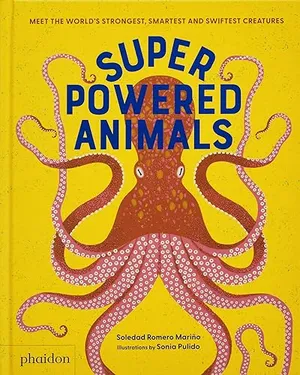
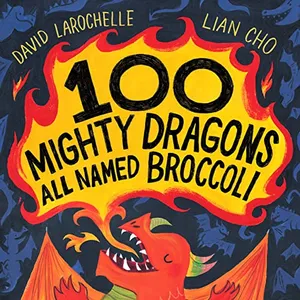
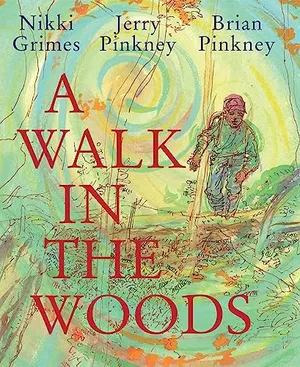
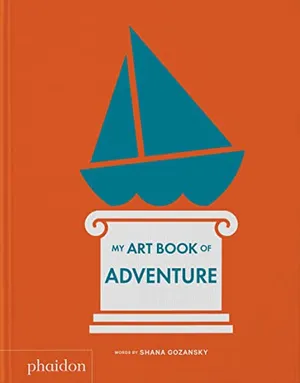
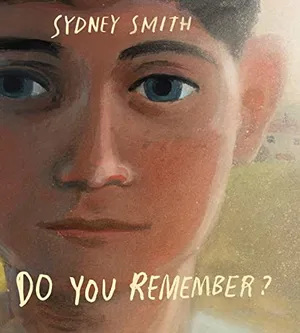
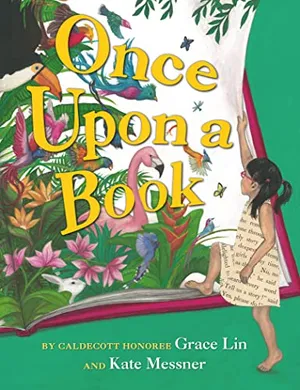
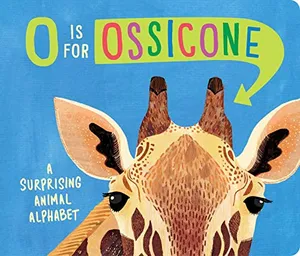
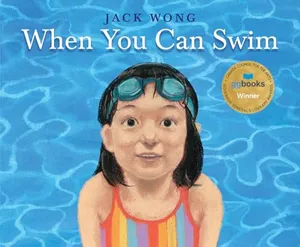
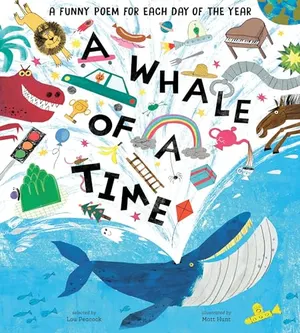
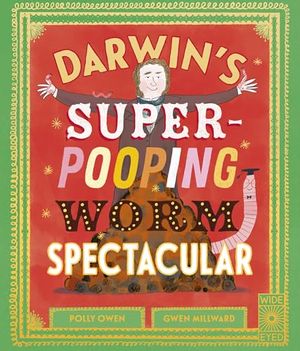
/https://tf-cmsv2-smithsonianmag-media.s3.amazonaws.com/accounts/headshot/megan.png)